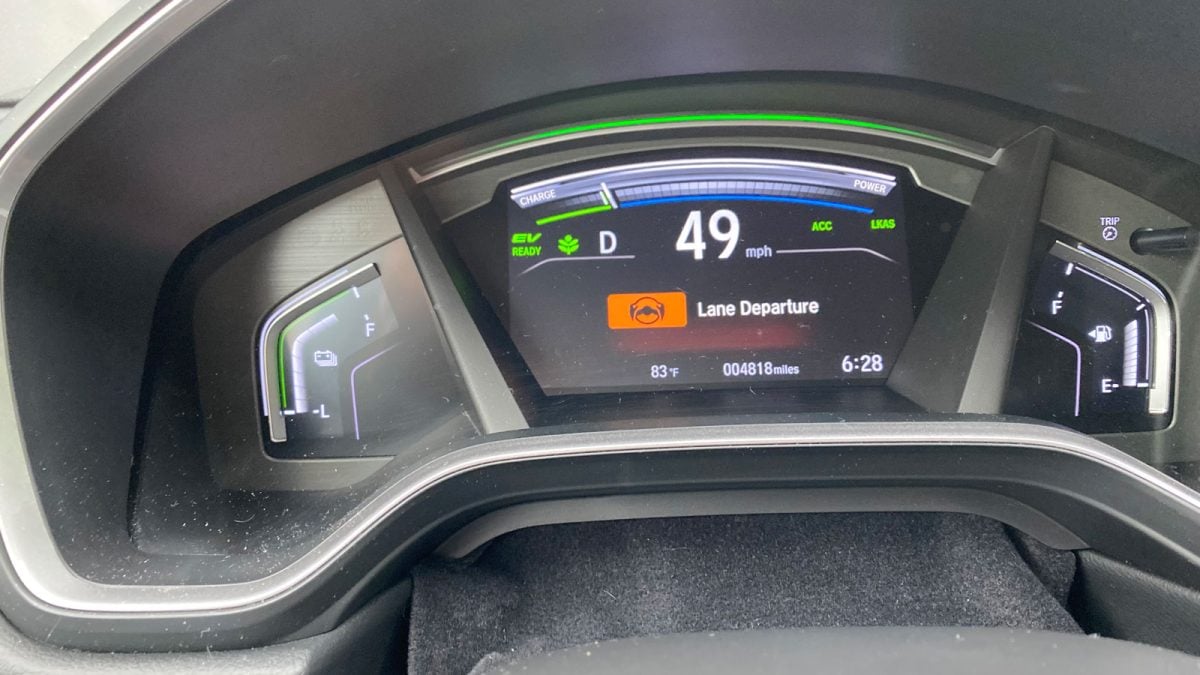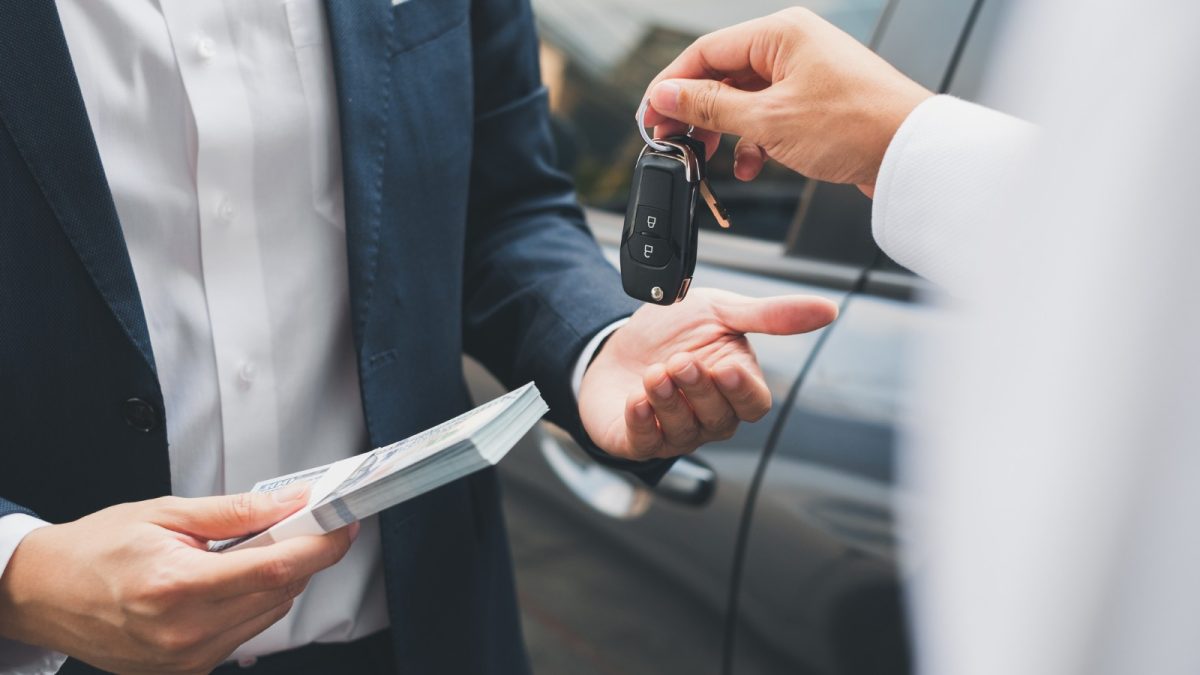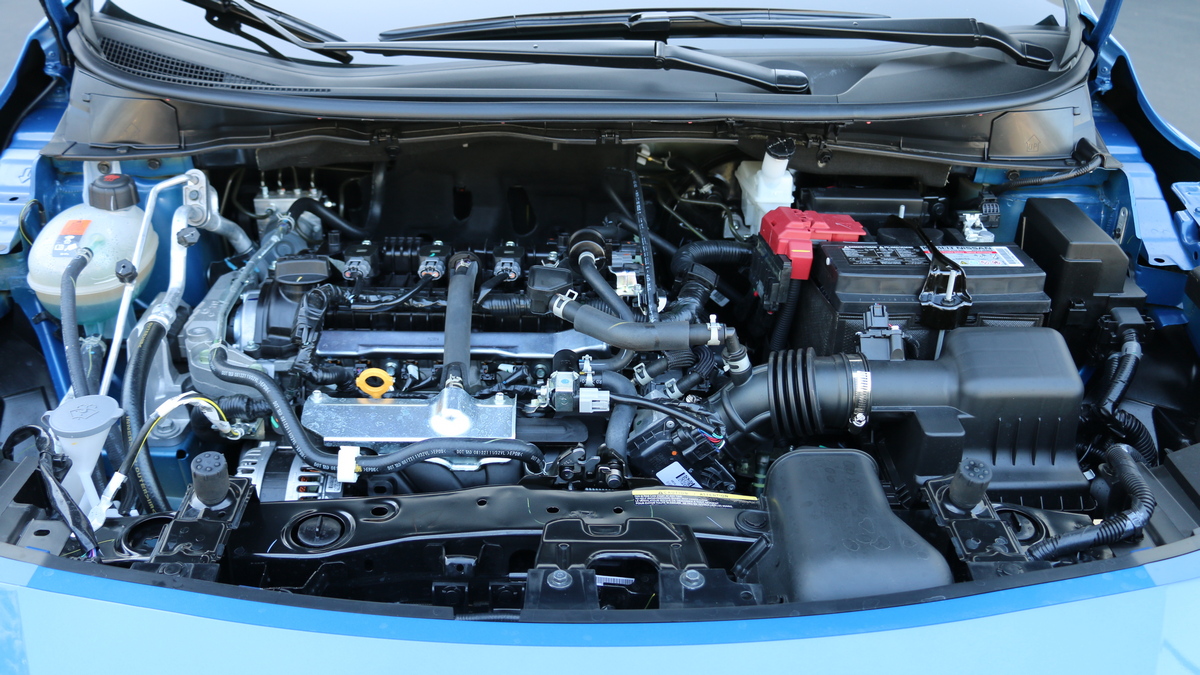Quick Facts About Lane-Keeping Assist
- Lane-keeping technology uses cameras to monitor a car’s lane position and gently steers the vehicle back toward the center if it drifts too close to the edge.
- Using lane-keeping assistance is not a substitute for careful driving and paying attention when behind the wheel.
- Lane-keep assist is not foolproof, and the technology requires clear lane markings to be effective.
In the lexicon of today’s driver-assistance technology, Lane-Keeping Assist (LKA) is a feature we hear about often. Also called Lane-Keep Assist, it is one of the building blocks in the foundation of fully autonomous cars.
Staying within the boundaries of a lane is a core capability of fully autonomous or driverless cars. Although streets full of self-driving cars are decades away, lane-keeping assist is a useful benefit of driverless technology.
According to a National Safety Council (NSC) study of 2023 traffic crashes involving two motor vehicles resulting in a fatality, 38.1% of fatalities were caused by at least one vehicle leaving its lane. Lane-keeping devices could have helped avoid each of these fatalities.
How is this happening? The three leading causes of lane-drift crashes are fatigue, distraction, and incapacitation from illness, drugs, or alcohol.
So, if you want to know everything about Lane-Keeping Assist, especially when buying a car, our guide has it covered.
- What Is Lane-Keeping Assist?
- How Does Lane-Keeping Assist Work?
- Common Variations on Lane-Keeping Assist?
- What To Know When Operating Lane-Keeping Assist
- Pros and Cons of Lane-Keeping Assist
- How To Use Lane-Keeping Assist
- When Should You Use Lane-Keeping Assist?
Straddling the line between driver assistance and safety technologies, lane-keeping assist keeps track of where a vehicle is within its lane. If you allow the car to stray too close to one of the lane markers on the highway, LKA gently steers the vehicle back toward the center.
Although you may find lane-keeping assist somewhat intrusive, it functions with a minimum of interference. Some LKA systems produce an audible warning, allowing you to recenter the vehicle yourself before it influences the steering. In cars with haptic feedback, the warning may be a vibrating steering wheel or seat.
If you fail to respond to the warning, lane-keeping assistance will gently pull the vehicle toward the center of the lane. You can override LKA by simply resisting the automatic steering input. Once you produce some resistance, lane-keep disengages.
RELATED: Car Safety Features 101: Everything You Need To Know
What Lane-Keeping Assist Doesn’t Do
Having lane-keeping assist does not mean the vehicle will drive itself. If the car has LKA enabled, you should keep your hands on the steering wheel and stay aware of your surroundings, including the cars in other lanes.
Lane-keep technology relies on “seeing” the lane markings painted on the roadway. If those painted lines are covered by leaves or snow, or blurred by heavy rain or fog, the LKA system will not work. Lane-keeping assist may become confused by faded paint or grooves in the road.
Lane-keeping assist is not a substitute for careful driving and paying attention when behind the wheel.
How Does Lane-Keeping Assist Work?
Forward-pointing cameras are the eyes of lane-keeping technology. The system monitors the lane markers (center and side stripes) of the lane in which you are traveling. It is programmed to react when the vehicle drifts too close to lane markers.
Depending on the system, once your car strays beyond a defined distance from one of the lane markers, LKA springs into action. That action may first be a warning, then a steering correction or some other driving input will occur.
In the case of steering takeover, the lane-keeping technology controls the vehicle through its electronic steering system. In other cars, lane-keep assist uses the vehicle’s antilock brake system. By applying brake pressure to a particular wheel, it pulls the car back toward the center of the lane.
How to Disengage Lane-Keeping Assist
Whether it’s the electronic-steering system or the antilock-braking system providing the steering input, neither can override driver input. In other words, if you resist the lane-keeping assist steering input, it disengages.
To avoid action from the LKA when intentionally changing lanes, using the appropriate turn signal will cause lane-keeping assist to stand down.
Common Variations of Lane-Keeping Assist
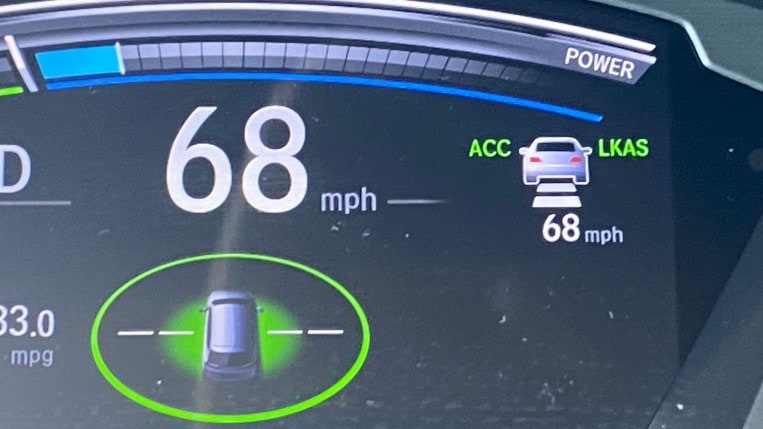
Several interactive driver-assistance systems can be at play simultaneously. Some of them serve similar driver-assistance or safety roles to lane-keeping assist. They may function alongside LKA, or they may stand on their own.
Lane-Departure Warning (LDW) — LDW uses a front-mounted camera to monitor the vehicle’s location between the lane markers (center and side stripes). When it sees the car is veering close to the lane markers on either side, it issues a warning, signaling you to steer back into your lane.
Lane-Keep Assist (LKA) — This is simply a variation of the name lane-keeping assist. The feature recognizes when the vehicle is too close to a lane marker and gently steers it back toward the center.
Road-Departure Assist (RDA) — This is another name variation for LKA. A road-departure system recognizes when the vehicle is driving too close to the edge of the road and gently steers it toward the center.
Lane-Centering Assist (LCA) — LCA is a more advanced form of LKA. It takes a more active role in keeping your vehicle centered in its lane. It also uses a forward-pointed camera to monitor lane boundaries. Very often, LCA uses some form of steering assist when steering around curves.
Other Branded Names for Lane-Keeping Assist:
For the most part, carmakers refer to their LKA systems as lane-keeping or lane-keep assist. Here is the list of automakers that market their LKA system under another name.
| Brand | LKA System Name |
| Audi | Audi Active Lane Assist |
| BMW | Active Lane Keeping Assistant |
| Chrysler/Jeep/Ram/Dodge/Fiat | LaneSense |
| Infiniti | Lane Departure Prevention |
| Mercedes-Benz | Active Lane Keeping Assist |
| Nissan | Intelligent Lane Intervention |
| Toyota/Lexus | Lane-Departure Alert with Steering Assist |
| Volkswagen | Lane Assist |
| Volvo | Lane Keeping Aid |
What to Know When Operating Lane-Keeping Assist
As with many of the latest driver aids, lane-keeping assist is relatively seamless in its operation. You turn it on, and the system takes care of the rest. However, there are a few things about LKA you need to keep in mind.
- It’s not 100% foolproof. As the driver, you still need to pay attention and act fast if the system fails.
- It’s sometimes integrated into cruise control. A few LKA systems require you to engage the adaptive cruise control system first.
- It’s only effective on streets with clear lane markings. Some systems are sophisticated enough to recognize the edge of the road as a lane marking. However, generally, clearly painted markings are required for LKA to function correctly.
- It needs visible lane markings. LKA may not engage if the lane markings are covered (snow, mud, and so forth) or highly faded.
- It can easily be overridden by driver takeover. If you offer a bit of steering resistance when lane-keeping assist provides steering input, it will terminate its effort.
- It can be easily overridden by using the turn signal. To override the system when intentionally changing lanes, alert the LKA by simply using the appropriate turn signal.
RELATED: Adaptive Cruise Control: How Does It Work?
Pros and Cons of Lane-Keeping Assist
The pros of lane-keeping assist certainly outweigh the cons. Let’s take a look at the scorecard, anyway.
Pros of Lane-Keeping Assist
- Enhanced safety: Early correction of lane drift reduces the likelihood of lane creep causing a sideswipe or head-on crash.
- Added peace of mind: Knowing that the LKA system is always on the job lessens driver anxiety.
- Reduced driver fatigue: Shouldering some of the load of maintaining lane discipline, LKA allows the driver to relax a bit.
- Elevated driver confidence: Particularly for less-experienced drivers, LKA serves as an instructive tool, keeping the driver focused.
Cons of Lane-Keeping Assist
- Dependence on clear lane markings: LKA requires clear, well-marked lanes to operate effectively. Fog, rain, snow, or worn line markings can prevent LKA from functioning.
- Encourages driver complacency: LKA is a driver aid that still requires the driver to pay attention and maintain control of the vehicle.
- Intrusive warnings: A LKA’s constant audible alerts can be annoying.
- Must be turned on: The driver can disengage LKA manually using a button on the steering wheel; however, LKA disengages automatically whenever the ignition is turned off. Therefore, the driver must manually re-engage it every time the vehicle is started.
How to Use Lane-Keeping Assist
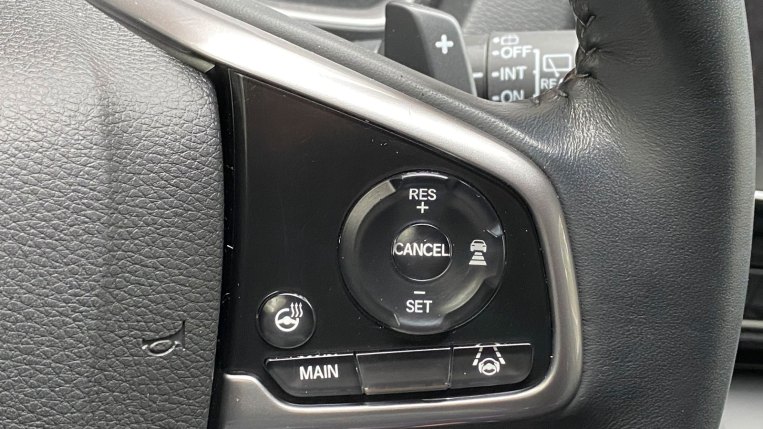
Most vehicles equipped with lane-keeping assist provide an on/off button on the steering wheel, instrument panel, or center console. You should quickly identify it by the image of a car between two parallel lines appearing on the button’s face.
Locating and pushing that button will engage the system. Typically, a green backlit image of a car between two parallel lines should illuminate somewhere among the alert lights on the instrument cluster display to confirm the system is operating.
Once engaged, the system should function effectively, notifying you when drifting toward a lane marking. If you don’t react to the audible warning, it will nudge you back to the center of the lane.
You can override the lane-keeping assist at any time simply by applying a bit of resistance to the system’s steering input. Disengage the system at any time by pushing the button again, turning it off.
When Should You Use Lane-Keeping Assist?
As just another driver-aid/advanced safety tool in your toolbox, LKA isn’t a cure-all. Because it relies on certain ideal conditions, its functionality can be sporadic, disengaging without warning. Consequently, although you can turn it on and leave it on without harming the system, it will disengage and re-engage on its own as driving conditions become less favorable and more favorable to its functionality. With that in mind, here are the conditions when it is best utilized.
- Clear lane markings: To function effectively, LKA requires clear lane markings. Whether it’s night or day, urban or highway driving, if the lane markings defining both sides of the lane are clear, conditions are good for LKA operation.
- Fair weather conditions: Rain, snow, and fog can interfere with the LKA camera’s ability to see the lane markings, causing the system to disengage and re-engage.
- Long highway drives: Longer highway treks can be tiring. Allowing the LKA to help you maintain your lane can reduce fatigue and stress.
Test Lane-Keeping Assist Before Buying
Lane-keep assist is a prominent safety feature on many newer model cars. Even if your current vehicle is equipped with it, try lane-keeping assist when test-driving cars you’re interested in buying.
The sensitivity of LKA systems varies from one manufacturer to the next. While an aggressive lane-keep is not likely a deal-breaker, it’s better to understand how it operates and how sensitive it is when you’re considering cars to buy.
RELATED: Self-Driving Cars: Everything You Need To Know
Editor’s Note: This article has been updated for accuracy since it was originally published.
